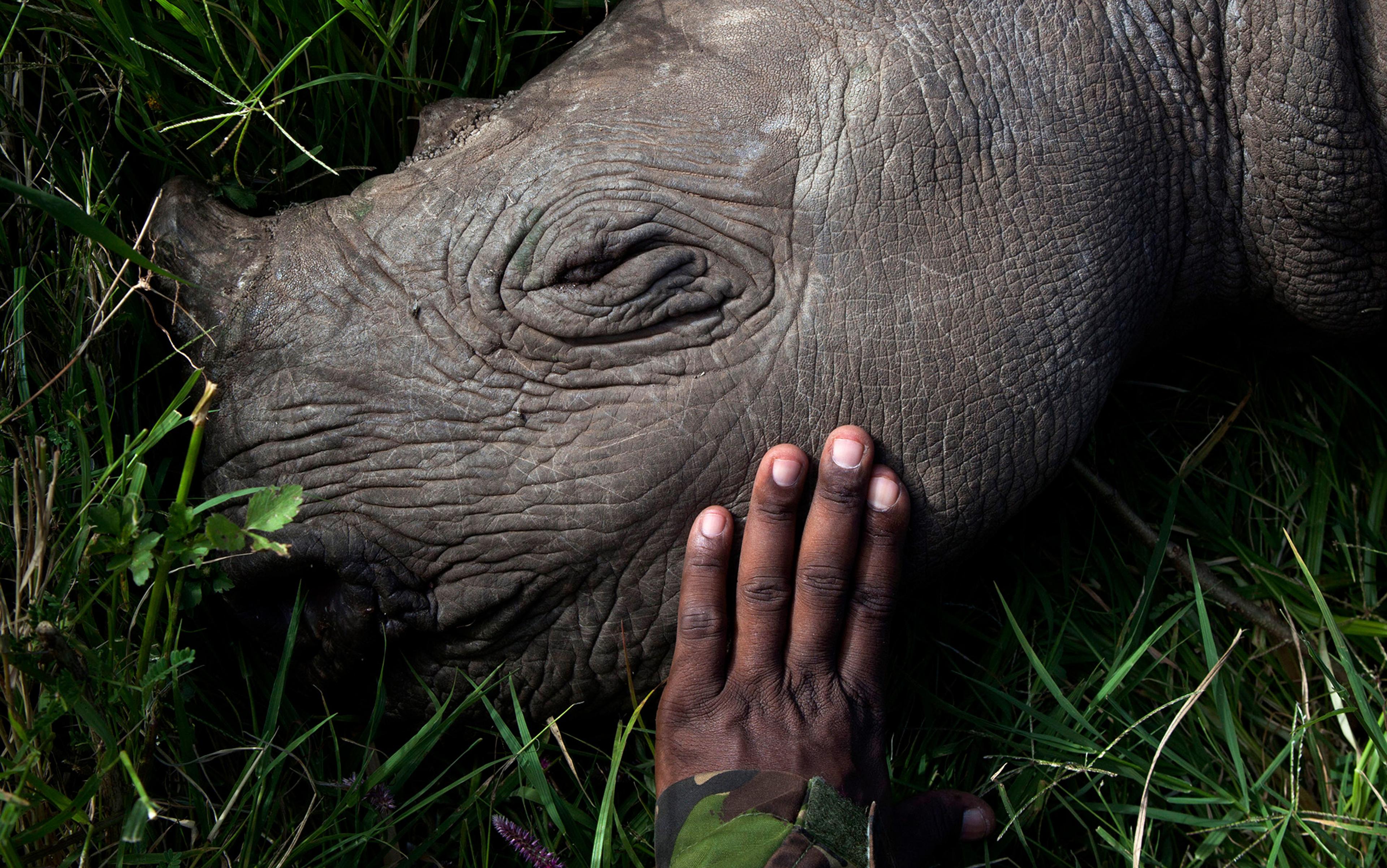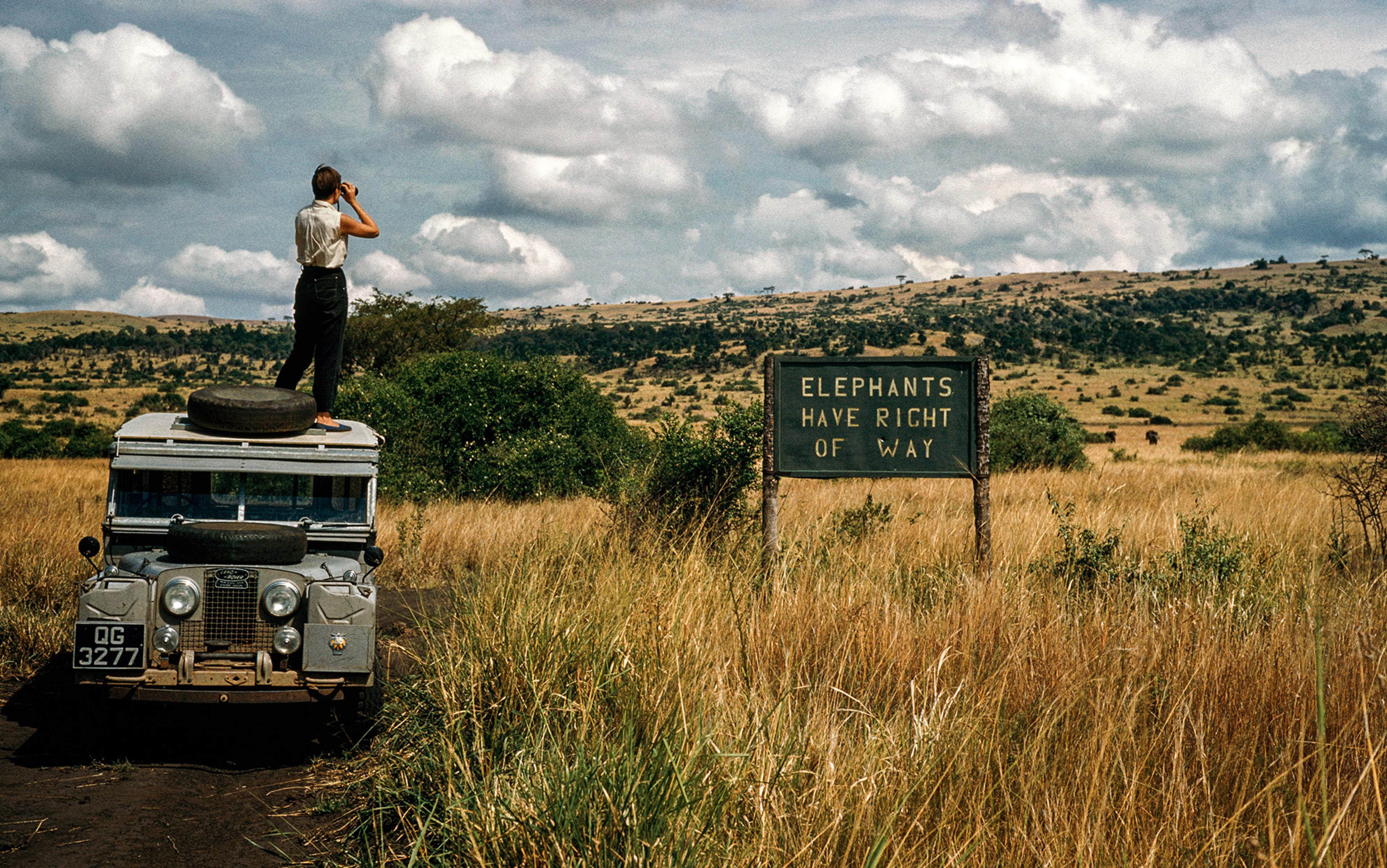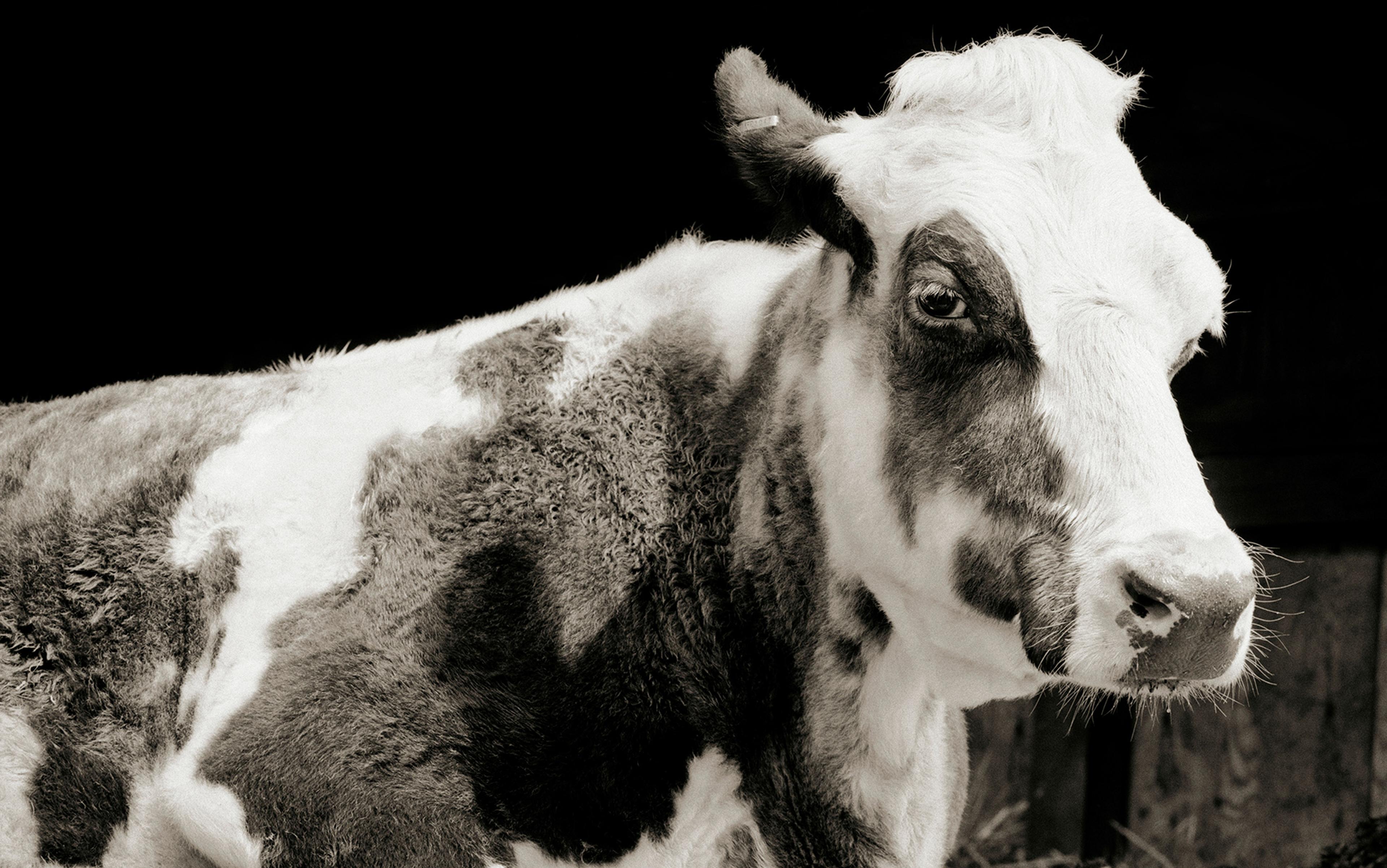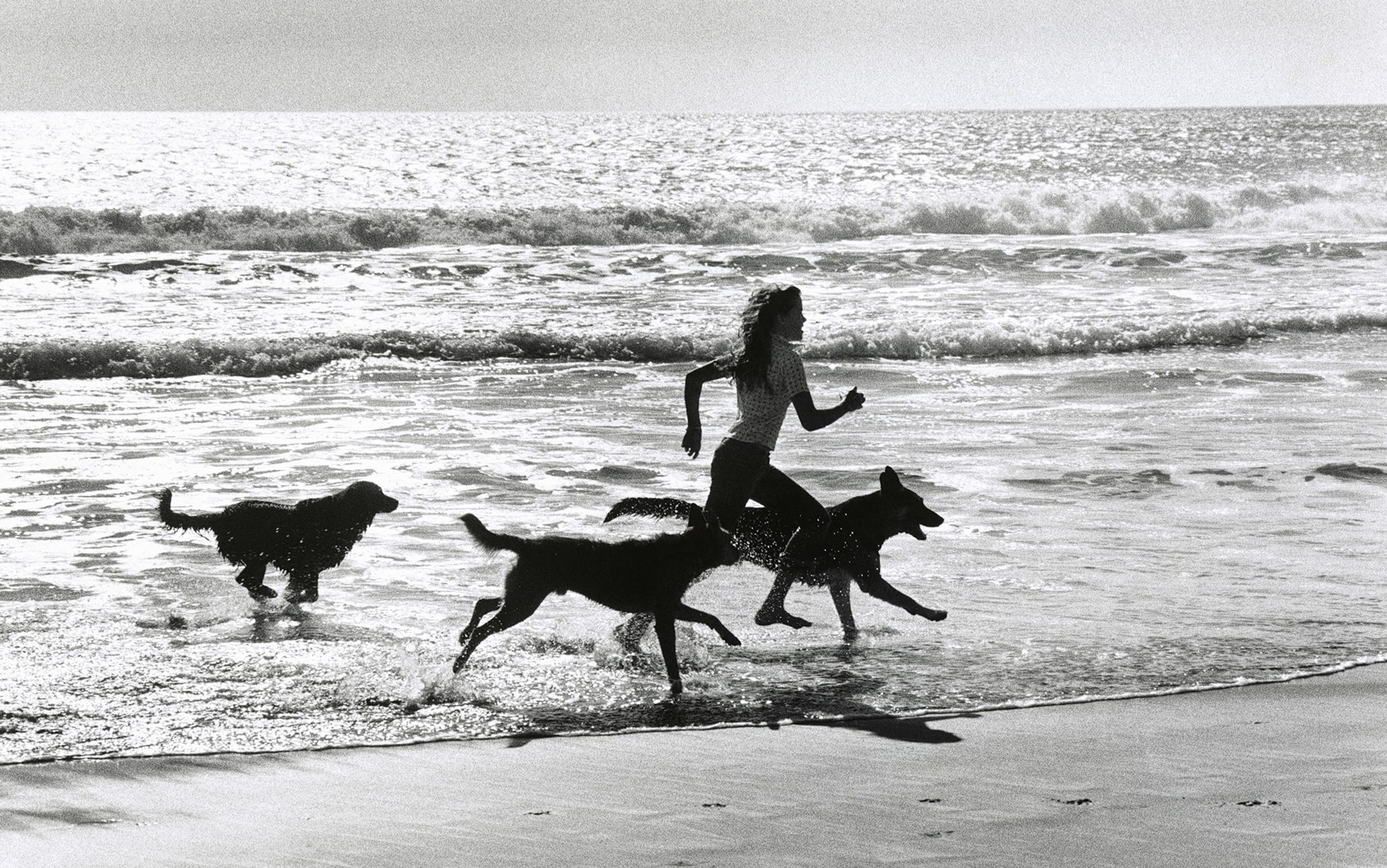At the time of writing, Australia is on fire. The fires have killed at least 25 humans and more than a billion animals. Animals such as koalas are especially at risk, since their normal response to threats – climbing to the tops of trees – leaves them vulnerable in the case of fire. As a result, an estimated 25,000 koalas have died and many more will die in the coming weeks.
In 2018, Hurricane Florence swept through North Carolina. The floods killed at least 59 humans and many animals, including at least 3.4 million farmed animals and an unknown number of wild animals. Since farmed animals live in captivity, they not only had no help from us but also had no way to help themselves. They were left alone as the waters rose, with predictable results.
More generally, changing weather conditions are causing animals to suffer and die all around the world. Aardvarks in the Kalahari are starving because of increasing drought. Black bears in the United States are unable to hibernate because warming temperatures are waking them up and preventing them from going to sleep. The Australian mosaic-tailed rat is now extinct because of rising sea levels. Countless aquatic animals are dying each year because of ocean acidification.
Human-caused climate change is increasing the frequency and intensity of such events. As global average temperatures rise, we can expect rising sea levels, an increase in the frequency and intensity of extreme weather events, flooding coastal areas, and regional conflicts over land, water and food. And while some animals will adapt, many will not. If we stay on this path, we will subject quintillions of animals over the next century to the ravages of disease, weather and ecosystem collapse.
Human activity harms animals in many other ways, too. We breed and kill at least 100 billion animals per year for food and at least 115 million per year for research. Fishing kills 1-3 trillion animals per year. Deforestation destroys animal habitats. Leaf blowers and light pollution kill insects. Building and vehicle collisions kill at least a billion animals per year. This year, more than 300 birds were injured or killed in collisions with a building in North Carolina in a single night.
These impacts raise the question: what do we – that is, humans in the global 1 per cent – owe animals in the context of human-caused ecological disaster? I think that the answer to this question is clear. If our actions are harming other animals, then we have a responsibility to try to reduce or repair these harms. Yet this will not be easy to do. It will take not only time, energy and money but also foundational social, political and economic change.
Of course, many people appreciate that human activity is affecting species and ecosystems. Historically, about one species went extinct per year. Current extinction rates are 1,000 times higher than this background rate, and future extinction rates are likely to be 10,000 times higher. Many people worry that this biodiversity loss, combined with other environmental changes, will lead to ecosystem collapse and disruption of life-support services globally.
It is easy to think that if we protect species and ecosystems, then we will be protecting animals too. But while protecting species and ecosystems might help, it is not enough. Animals are more than parts of a whole, like drops of water or grains of sand. They are living, breathing, thinking, feeling individuals. What some animals need differs from what other animals need, and what animals need individually differs from what they need collectively.
To see that individual and collective needs differ, consider our own species. Suppose we ensure that humanity survives to see another generation. Does that guarantee that humans will have good lives? Of course not. Many humans can suffer and die unnecessarily even if humanity survives. So, if we care about humans individually as well as collectively, then we have to tend to our needs at both levels. The same is true for other animals.
Animals already have hard lives. They suffer and die all the time from natural causes such as hunger, thirst, illness, injury and predation, as well as from human causes such as agriculture, research, entertainment, deforestation and development. Climate change is now enhancing many of these threats and adding new ones. This means that we have two reasons to help many animals: they are suffering and dying, and we are either partly or wholly responsible.
My own view is that we should attempt to reduce animal suffering as much as we reasonably can, whether or not we have caused it. If we can help others in need without sacrificing anything significant, then we should do so. Suppose you see deer drowning in a pond, and you can help them out without sacrificing anything at all. Should you help? I think you should. And, if public reaction to animal-rescue videos in the media is any indication, many agree with me on this.
But even if we don’t go that far, we should still attempt to reduce animal suffering when we are responsible. For example, suppose that you build a pool in your yard, cover it up, and then see a deer fall in. If you can help the deer out without sacrificing anything at all, should you help? Of course you should. In this case, assistance is not a matter of your preventing something bad from happening. It is instead a matter of your having caused something bad to happen, and then attempting to mitigate this harm.
The idea that we should take responsibility for our actions might seem modest, but it has radical implications in a world where we cause so many animals to suffer. In some cases, we cause them to suffer directly and individually, such as when we hit them with cars. In other cases, we cause them to suffer indirectly and collectively, such as when we contribute to climate change. Either way, if we have a duty to take responsibility for our actions, we will have a duty to reduce or repair an increasingly high degree of animal suffering moving forward.
In response to this argument, some people claim that helping animals is futile. If we help animals, we might change how they suffer and die, but we will not change that they suffer and die. Also, we might end up doing more harm than good overall, by interfering with food chains, population levels and other features of natural ecosystems.
Even if we can’t eliminate suffering and death, we can still reduce suffering and delay death
This objection is well taken. Animals evolved to suffer and die. Many animals survive by eating other animals. Others reproduce by having thousands of babies, the vast majority of whom die right away. And, of course, natural selection involving hunger, thirst, illness, injury, predation, floods, fires and so on is part of what keeps ecosystems functioning. As a result, there is a risk that helping animals now will only cause them to suffer later. There is also a risk that helping some animals will only cause others to suffer by depriving them of a meal, by making them a meal, or by altering ecosystems on which many animals depend.
Our history of intervening in complex systems confirms this fear. In general, humans are all too willing to interfere with systems that we barely understand to improve them according to our own standards. When we embark on such projects, our intentions might be good, but our impacts can still be bad, and can reveal a worrying degree of arrogance. We see this tendency in colonialist efforts to reshape some human communities to resemble others, often with disastrous results. We also see it in anthropocentric efforts to reshape nonhuman communities to resemble human communities, often with similarly disastrous results.
How can we respond to this objection? We can note that even if suffering and death are inevitable, we can still reduce suffering and delay death. If you injure someone and can treat the injury, it would be ridiculous for you to refuse to help on the grounds that they can still be injured in other ways later on. Similarly, if you place someone in a lethal situation and can help them escape that situation, it would be ridiculous for you to refuse to help on the grounds that everyone dies eventually. That this is so much more obvious in the human case than in the nonhuman case reflects the fact that we still fail to see other animals as individuals.
Additionally, even if some ways of helping animals can be expressions of arrogance that do more harm than good, other ways of helping them can be expressions of respect that do more good than harm. In general, the fact that our actions can be harmful is a reason to act thoughtfully, not a reason not to act – especially since inaction can be harmful too. We need to accept animals on their own terms. We need to learn more about how our activity impacts them. And we need to pursue structural change by expanding our social support systems to accommodate all animals.
There are orders of magnitude more nonhumans than humans in the world; we are complicit in their suffering
There are some people, of course, who claim that helping animals is too demanding. We already struggle to help all the humans who need it, and the nonhuman population is much more expansive, diverse and in need of support than the human population. So, if we include animals in our adaptation efforts, that will push us past our limit.
This objection is well taken too. There are orders of magnitude more nonhumans than humans in the world, and we are increasingly complicit in their suffering. So, if we accept responsibility for our actions, we will not only be accepting responsibility for much more harm than we did in the past. We will also be accepting responsibility for much more harm to nonhumans than to humans overall. Even if we assumed that humans had higher moral standing than nonhumans, the total amount of morally relevant nonhuman suffering in the world would still be massive, and the idea of accepting responsibility for all this suffering would be overwhelming.
Not only do we cause more nonhuman than human suffering overall, but the activities that cause all this suffering are central to our social, political and economic systems. Our world is built to allow a tiny fraction of humans to flourish through domination and exploitation of everyone else. Industrial animal agriculture alone is a leading cause of animal suffering, worker exploitation, land use, water use, energy use, antibiotic use, waste, pollution and climate change. Many other systems are similar. So, accepting responsibility for our actions will require pursuing radical systemic change. It will also require limiting many freedoms that people currently enjoy.
How can we respond to this objection? We can note that many ways of helping animals benefit humans too, and don’t require much sacrifice. For example, if we expand plant-based food systems, we can increase access to healthful, humane, sustainable food. If we expand forests, we can increase animal habitats and carbon-storage systems. If we support vaccine programmes, we can prevent the spread of zoonotic diseases. And, if we install overpasses and underpasses on highways and animal-friendly windows on cars and buildings, we can prevent collisions. So, even if there is a limit on what we can do, we can still do a lot.
That said, we should be open to more demanding ways of helping animals as well. Whenever people benefit from injustice, they tend to see justice as excessively demanding at first. This case will be no exception. We have to accept that our duties are more expansive and our rights more limited than we previously thought. This can be a hard pill to swallow. But of course, it is not acceptable for us to restrict the scope of justice simply to make our lives easier. Instead, we must expand the scope of justice to include everyone who deserves it, and we then have to think creatively about what just co-existence might look like.
It is still too early to say in detail what co-existence with other animal species will look like in a world reshaped by climate change. But we can say this much: climate change will not respect species boundaries any more than it will respect national or generational boundaries. It will introduce new threats and amplify existing threats for many of us, and the individuals most responsible will be different from the individuals most impacted.
In response to our climate emergency, programs like the Green New Deal aim to mitigate the effects of climate change, adapt to climate change, and expand access to healthcare, housing, employment and more. Why link environmental and social justice like this? Because they are already linked. Since climate change will make it harder for many people to meet their basic needs, we need to tend to these needs as part of our adaptation efforts.
Climate change is too important for us to settle for half-measures
Many people worry that programs like the Green New Deal are too ambitious. I worry that they are not ambitious enough. We have a responsibility to mitigate climate change, adapt to climate change, and provide general support for everyone impacted by our activity, not merely members of our own nation, generation, or species. This will not be easy to do. But with enough effort, we can do it. Here are seven steps we can take to get started:
- We can limit the effects of our activity on other species as much as possible. For example, we can end support for industrial animal agriculture, which harms and kills more animals; consumes more land, water and energy; and produces more pollution and higher emissions than plant-based alternatives. We can also end support for industrial fishing and deforestation, which harm and kill trillions of animals per year, interfere with human and nonhuman communities, and destroy natural carbon-storage systems.
- We can research how to ethically and effectively reduce animal suffering. Some of this work will be scientific. For example, how will climate change affect animals, and how will our mitigation and adaptation programmes affect them? Some of this work will also be ethical. For example, if there are trade-offs between what some animals need and what other animals need, or between what individuals need and what groups need, what should we do?
- We can promote the idea that all animals matter morally, and that we have a duty not to harm them unnecessarily, and a duty to reduce or repair these harms when we do. Toward that end, we can support communities in protecting local ecosystems and the animals who live in them, and we can work with them to develop place-based solutions that can be both effective and publicly acceptable.
- Since keeping animals in the wild and bringing them into captivity both harm them, we can explore middle-ground solutions. For example, we can create and expand reserves and sanctuaries, where nonhumans can be free and humans can be either absent or present for support. Additionally, as we create new forests for carbon capture and plant-based agricultural systems for food, we can develop ways to humanely manage the wild animals who will live there.
- We can consider animal welfare when we make infrastructure changes. For instance, we can build habitats, corridors, overpasses, buildings, and streetlights that reduce the risk of collisions with animals. We can also expand plant-based urban agricultural systems, which create local jobs, beautify public spaces, purify the air, promote food security, create wild animal habitats, and support pollinator species all at once.
- Relatedly, we can support useful policy changes. For example, when we improve our education system, we can invest in curricula about what animals and the environment are like and how we can protect them. When we expand public works programmes, we can help people transition from work that involves harming animals and the environment to work that involves helping them.
- Finally, we can support useful institutional changes. For example, New York City employs an animal welfare liaison officer and is now opening an Office of Animal Welfare. Other governments should do the same. Of course, this alone will not ensure adequate representation for animals. But it will ensure that at least some people are empowered to represent animals – the majority of nearly every population – in decisions that affect them.
Throughout, it will be important to strike a balance between risk-aversion and risk-tolerance. Since we are already harming other animals, non-intervention is no longer an option. The only question is when our interventions will stop being entirely selfish and start being at least partly altruistic. Granted, the faster we act, the more we risk causing new harms. Yet the slower we act, the more we allow all the harms that we are already causing to play out in slow motion.
There is no single deadline for addressing climate change, only different deadlines for addressing it in different ways. But whatever deadlines we select for particular projects, we should work to meet these deadlines with human as well as nonhuman needs in mind. For example, if 2030 is our deadline for upgrading building materials to be more energy-efficient, then it should also be our deadline for upgrading them to reduce collisions with birds, since we can make these upgrades much more easily and affordably if we make them all together.
Some supporters of climate change programmes such as the Green New Deal might resist my proposal, since – they might think – it would be bad to make these programmes seem even more utopian than they already do. But climate change is too important for us to settle for half-measures. To meet this challenge, we need to start with a bold and uncompromising vision of what a just and sustainable future looks like. And, any vision that excludes more than 99 per cent of the victims of climate change is going to be fatally compromised from the start.
Human-caused climate change is both a threat and an opportunity. It will systematically change the planet, exposing billions of humans and quintillions of nonhumans to a variety of risks and harms. At the same time, in showing us the limits of our current systems, it reveals the need for new systems – new ways of living together within and across nations, generations and species. As we create these systems, we have the chance to make the world a safer place for everyone involved. We should take it.
Thanks to the NYU Center for Environmental and Animal Protection for generously supporting Jeff Sebo’s work on this topic.






